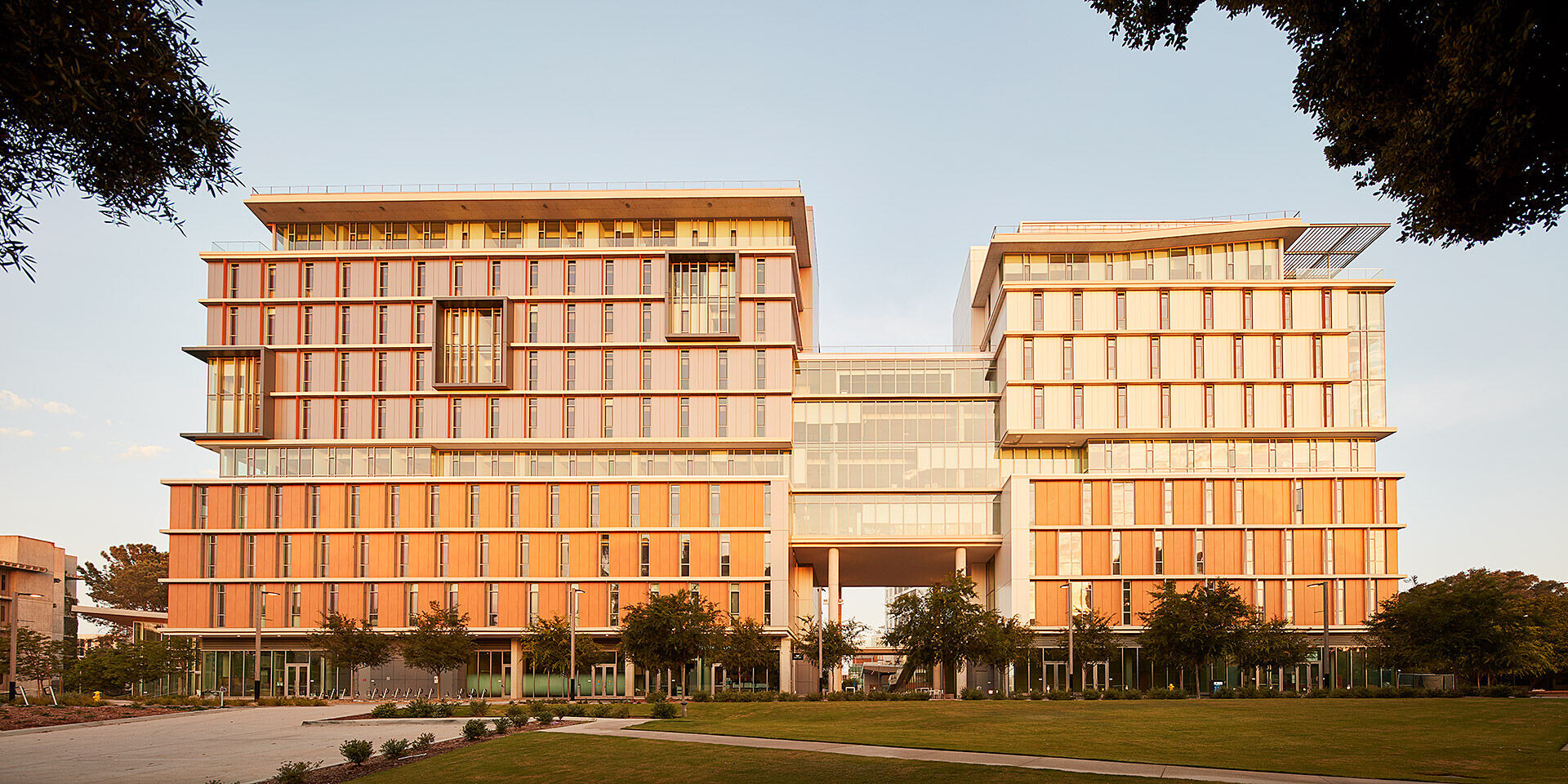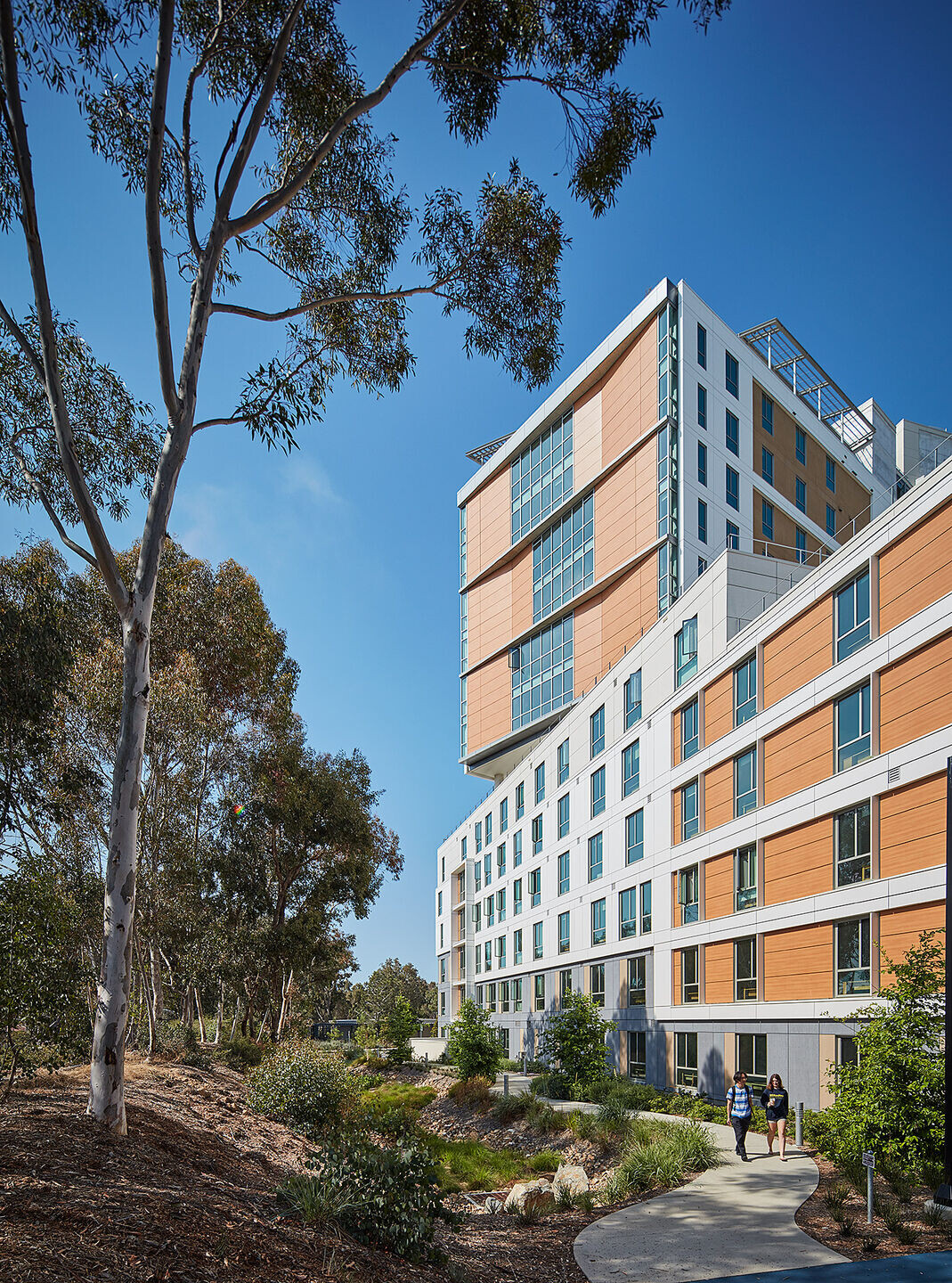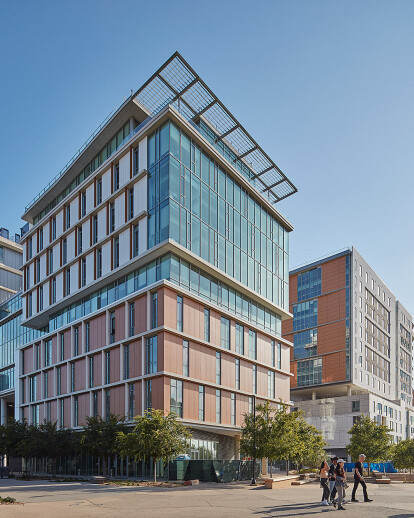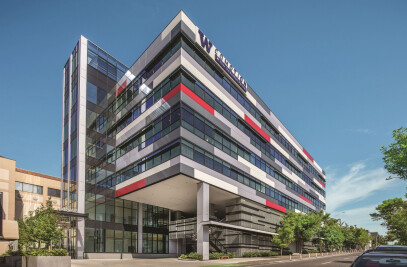For the design of the largest project in University of California, San Diego’s history, the University wanted a highly sustainable, energy efficient design that addressed Southern California’s climate and social challenges including drought, seismic activity and affordable student housing.
As HKS and Safdie Rabines Architects began designing the new North Torrey Pines Living and Learning Neighborhood (NTPLLN), these priorities were top of mind for the project’s three residence halls, two academic buildings, eight general assignment classrooms, offices, parking and public amenities.
“To improve the quality and character of UC San Diego housing, there was a strong desire to maximize exterior glazing to provide ideal views and natural light,” explains Dr. Tommy Zakrzewski, principal and director, Building Engineering Physics, HKS.
In addition, the Owner’s Program Requirements stated that a minimum of 30% glazing be included in the exterior elevations, and, where applicable, exterior shading, screening and high-performance coatings be considered for optimal thermal and visual comfort.

“Based on previous project success, Vitro Architectural Glass products were initially chosen for their aesthetic appeal and performance enhancements,” reports Zakrzewski. “Solarban® 70 glass was selected based on the desired transparency of the glass and visual clarity that it offers which helped to create stronger biophilic connections to the exterior environment maintaining a connection to nature and light through the building enclosure.”
Solarban® 70 solar control low-e glass from Vitro Architectural Glass has a color-neutral aesthetic and offers unprecedented solar control and visible light transmittance (VLT). When coupled with conventional clear glass in a one-inch insulating glass unit (IGU), Solarban® 70 glass provides a solar heat gain coefficient (SHGC) of 0.27 and VLT of 64%, making it an ideal choice for the NTPLLN project.
The glazing also helps the buildings avoid overheating during extreme heat climate events which was essential for occupant comfort. As for health and wellbeing, Solarban® 70 glass supports extensive daylighting, scenic coastal views and connections to the Southern California climate.
Along these same lines, the project tapped into HKS’ Mindful Materials Library — which includes Vitro Architectural Glass — to identify products with socially responsible supply chains.

Through the early design process for this American Institute of Architects (AIA) COTE Top Ten-winning project, the team utilized Honeybee linked to Grasshopper/Rhino to support detailed daylighting, comfort and energy calculations. To optimize the SHGC, window-to-wall ratio (WWR) and VLT, the glass was parameterized.
“The results from the initial shoe-box energy model were then integrated in the final whole-building energy model — including all passive and active design measures — achieving all LEED® points for the Optimize Energy Performance and supporting the achievement of the Daylight Design credit utilizing IESVE software,” he explains.
Ultimately, the final window-to-wall ratio was 35%, exceeding UC San Diego’s WWR target.
Providing equitable access to daylighting was another important design consideration. Checking that box, 75% of regularly occupied areas are daylit and 95% have quality views.
Due to the adjacencies, site massing and orientation of the buildings, window placement proved to be another challenge. To assist with this, solar insolation mapping of the building enclosure was performed with Solarban® 70 glass to best understand the annual and seasonal changes in direct solar radiation.
In addition to featuring healthy materials, the design honors UC San Diego’s distinct architectural vernacular. This includes warm white exposed cast-in-place concrete structures and wood panels. Further decreasing carbon and construction material quantities, structural post-tension floor slabs were used to reduce thickness and rebar use, increase resistance to soil deflection and minimize building heights, which, in turn, led to a surface area with less cladding.

“While the energy savings from daylighting contributed to lower operational greenhouse gas emissions through the reduction of energy demand, the true value of the design for UC San Diego resulted in the enhancement to occupant health and wellbeing at a time when students needed it the most, while isolated in place during the Pandemic,” says Zakrzewski.
NTPLLN provides 2,048 beds at below market rates, with suites and apartments organized around indoor and outdoor common areas that foster social interactions, collaboration and restorative connections to nature. A rooftop community garden grows fresh vegetables and herbs, and community kitchens offer places for cooking healthy meals.
All buildings are designed for passive survivability with natural ventilation systems and operable windows to help maintain indoor thermal comfort during extreme climate events. Other sustainable design features include photovoltaic arrays powering a net-zero parking structure and an anaerobic digester that processes food waste into electricity and fertilizer.
NTPLLN is the most substantial project in the higher education sector to receive LEED Platinum certification.






































